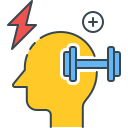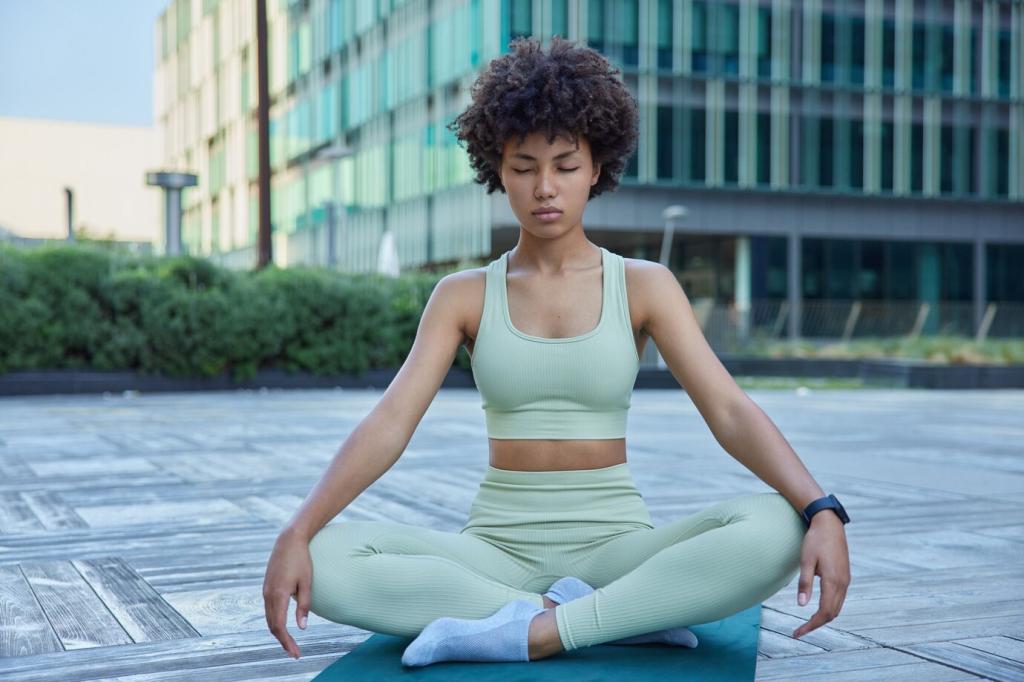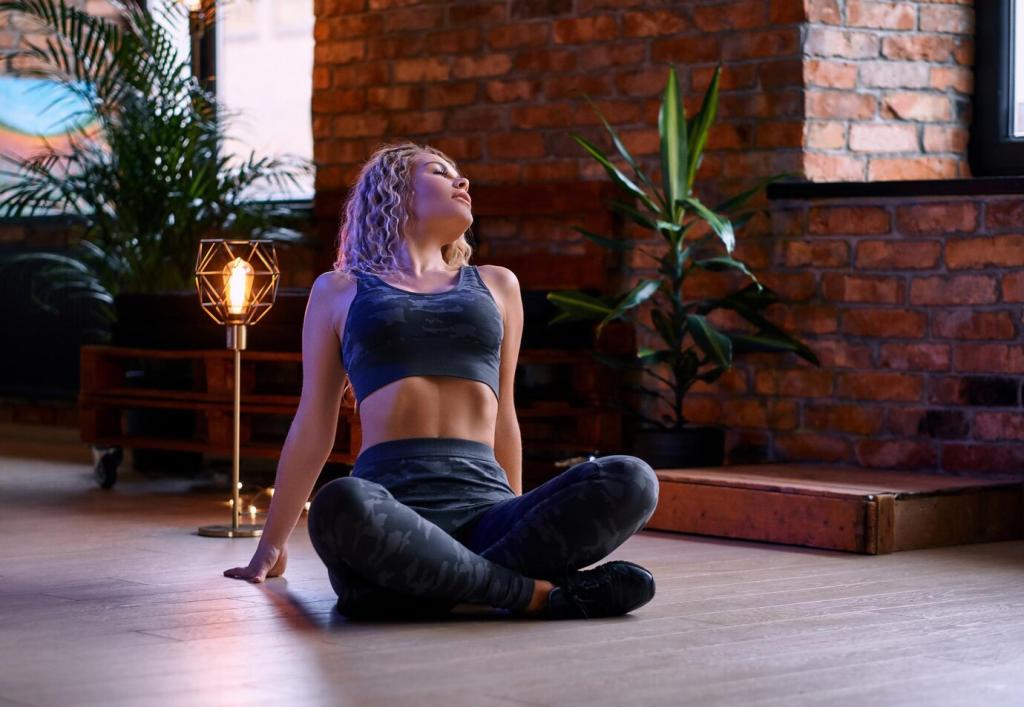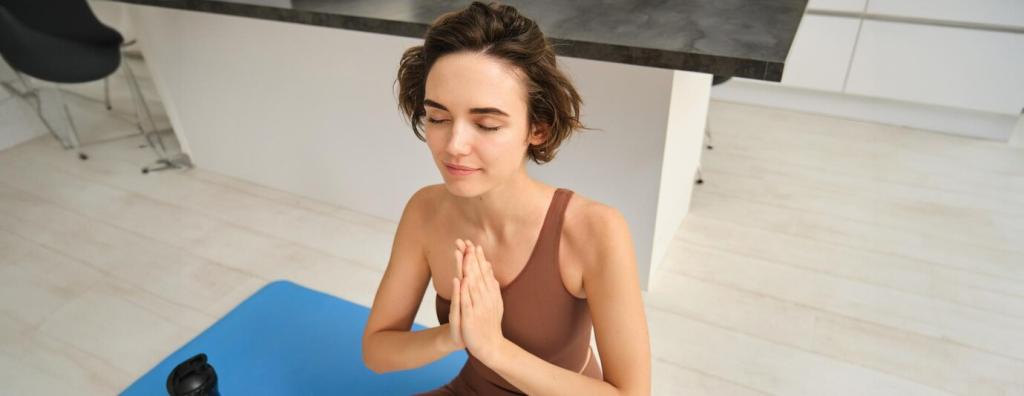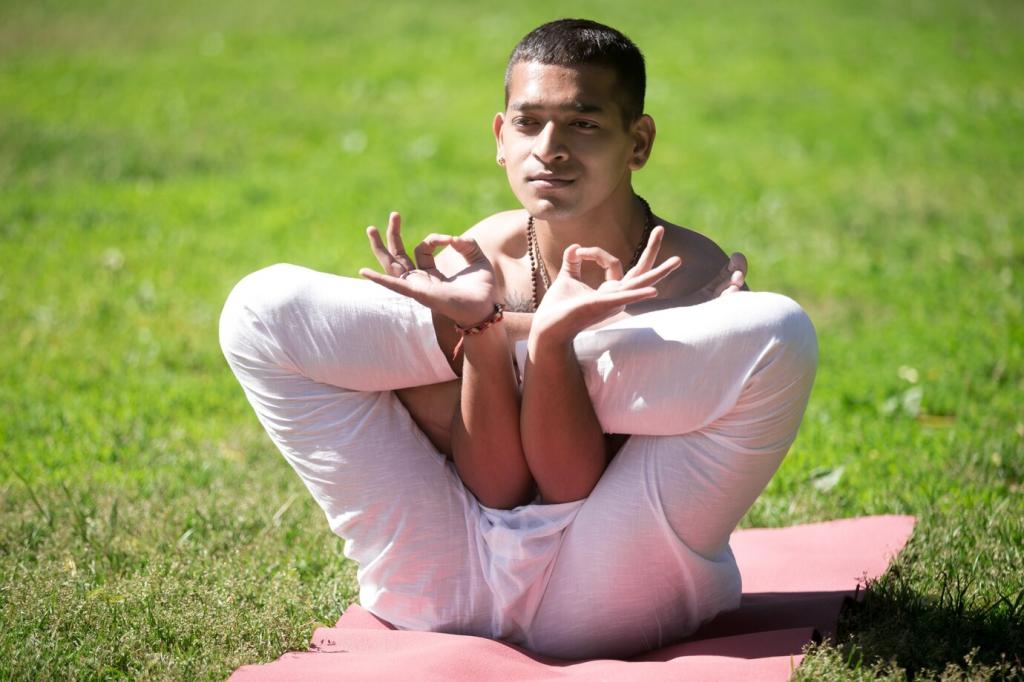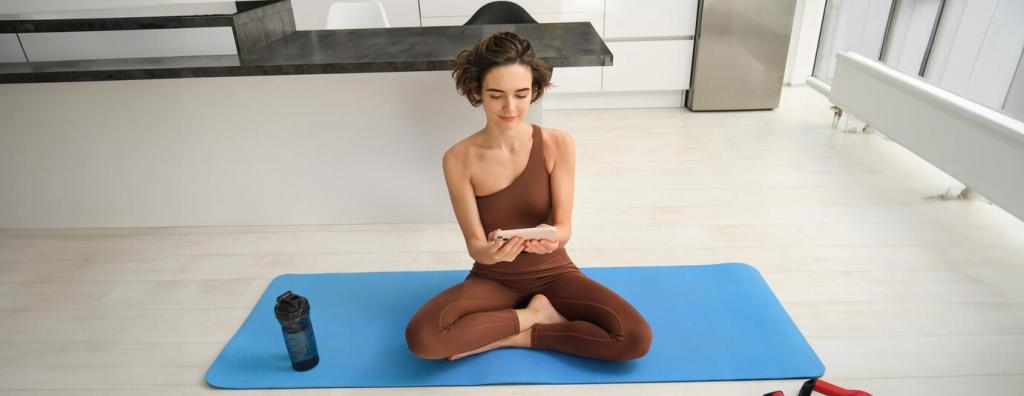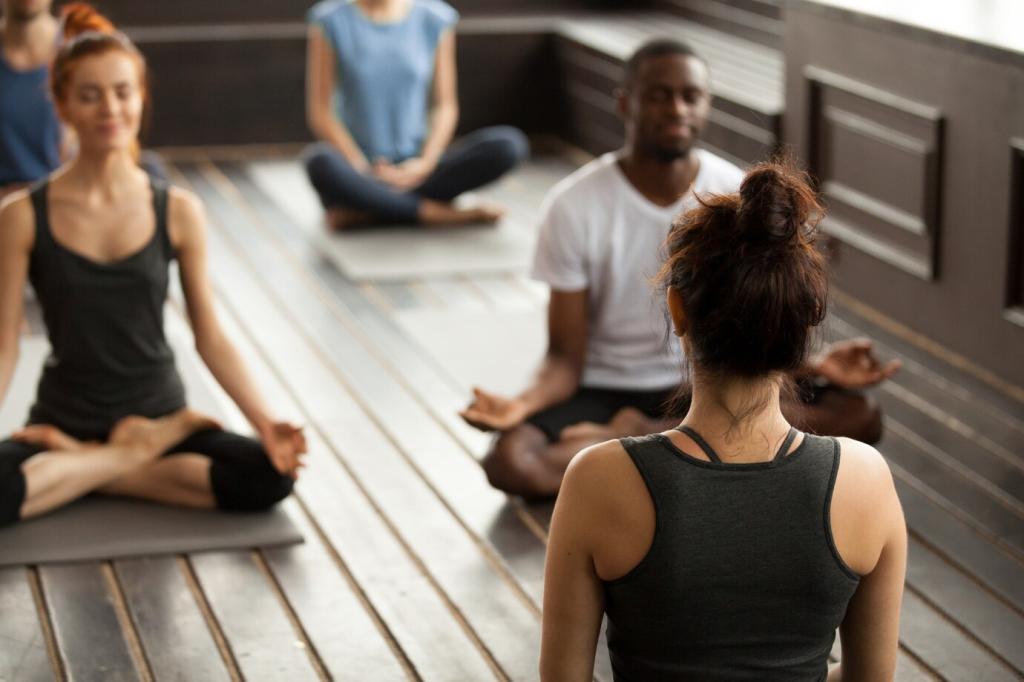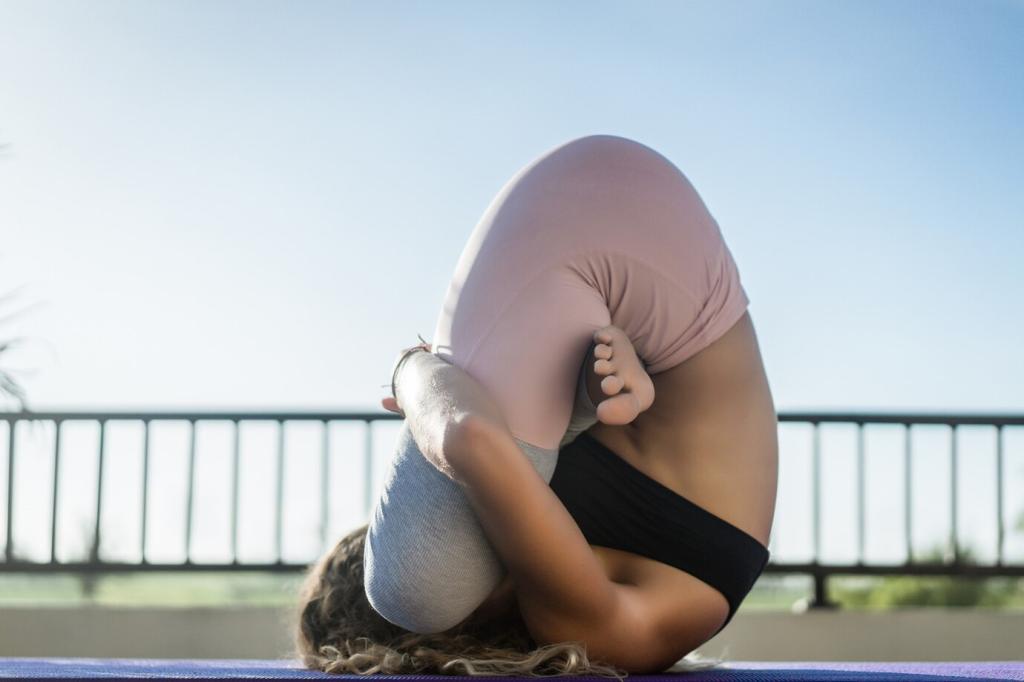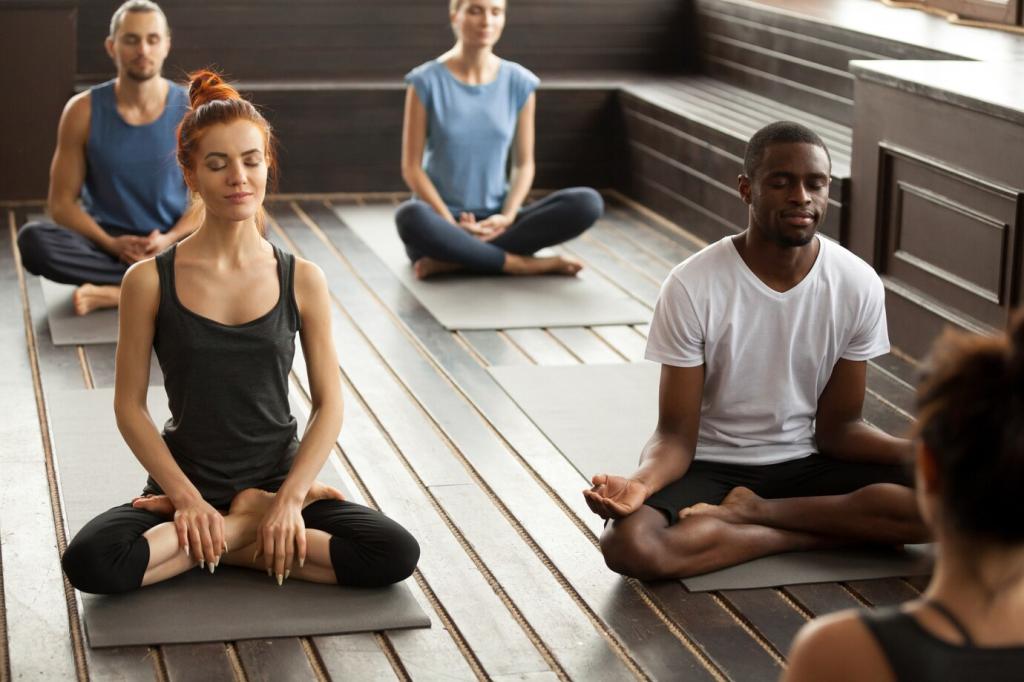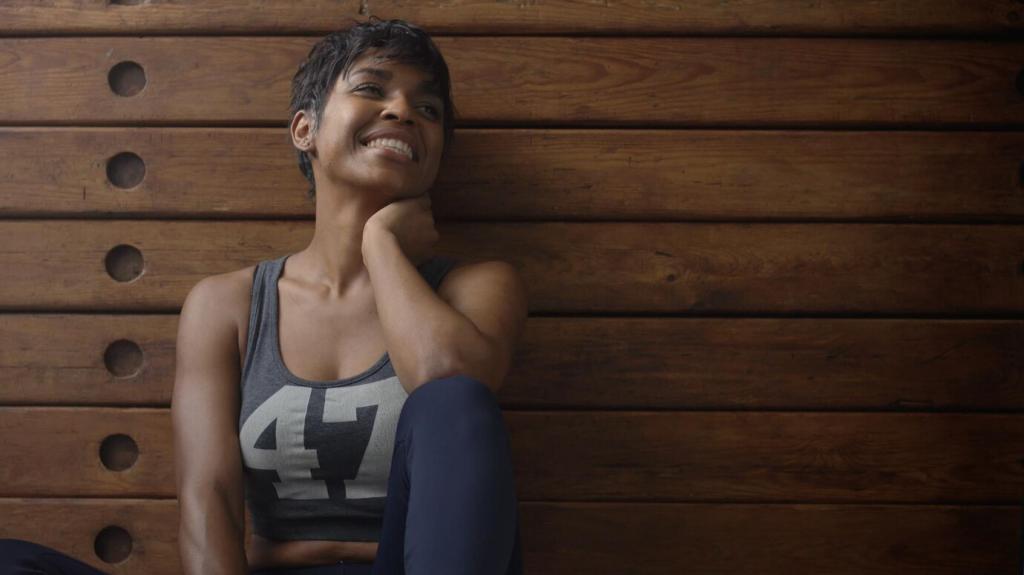Recovery, Cooldowns, and Pain Modulation
After your session, visualize tension draining from shoulders and hips like sand leaving an hourglass. Pair slow exhales with this image to shift toward parasympathetic calm and accelerate the feeling of refreshed recovery.
Recovery, Cooldowns, and Pain Modulation
Imagine warm blood moving smoothly through worked muscles, carrying nutrients and whisking away metabolites. This gentle visualization invites relaxation, reduces guarding, and makes light mobility work feel soothing rather than obligatory.
Recovery, Cooldowns, and Pain Modulation
Before bed, picture darkness wrapping you like a soft blanket and tomorrow’s workout feeling fresh. A simple nightly scene helps quiet late-night scrolling and builds a reliable bridge to deeper, more restorative sleep.
